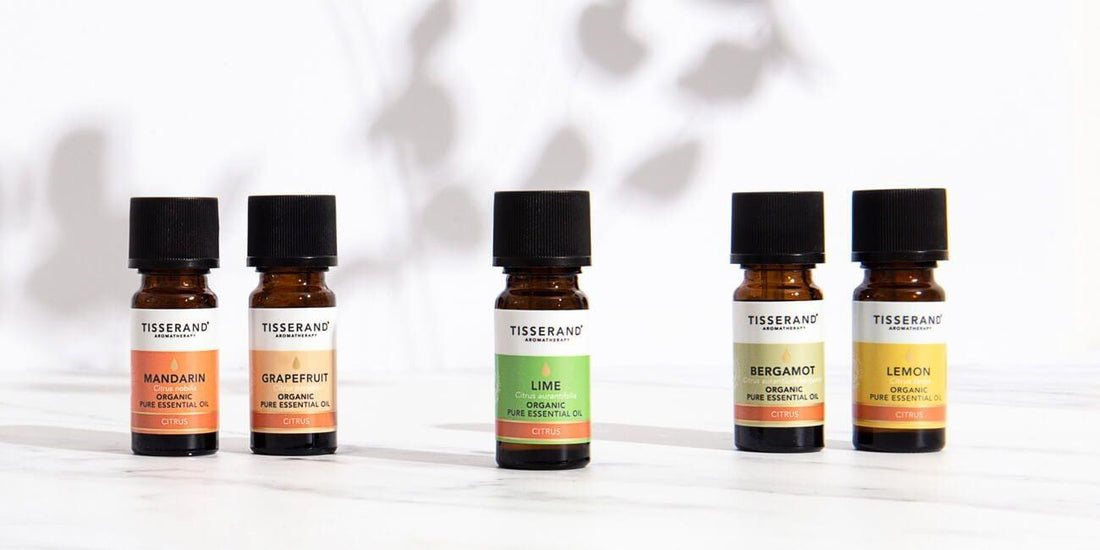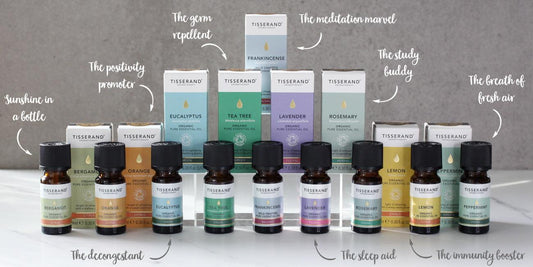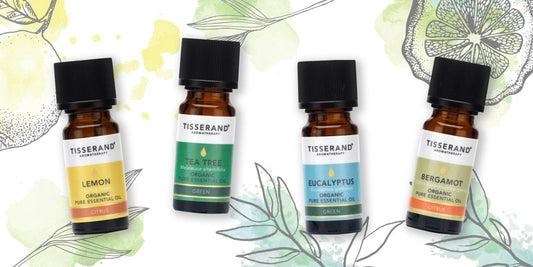They can boost your energy, help you sleep, and may even cure your hangover – but what exactly are essential oils and where do they come from? In this post, I’ll dive into everything you need to know about these important (and, well, essential) little liquids.
What is an Essential Oil?
Put simply, an essential oil is a fragrant, volatile (easily evaporated), and beneficial liquid extracted from a plant. Essential oils can be put into categories according to the part of a plant that they come from: flower, wood, grass, or fruit, which is helpful when deciding which one to use.
Take wood oils, for example, such as Cedarwood and Sandalwood. They have a rich, dark, and sensual smell, that helps you feel strong and confident. On the other hand, citrus oils, like lemon and orange, are fruity, bright and refreshing, and can help make you feel uplifted and positive.
Of course, you can choose an essential oil purely based on the scent you like, but we’d recommend considering how you want to feel afterwards. If you’re spoilt for choice and unsure where to begin, listening (or reading – like in this blog!) to an aromatherapist will help you discover which one is right for you.
When were essential oils discovered?
Before it was discovered how to extract the ‘essence’ of a plant, i.e. its aroma in liquid form, plants were used for centuries across the globe as teas, compresses, natural perfumes, or rubbed over the body to promote health and wellbeing.
It was in the 11th Century that Persian physician and philosopher Ibn Sina (or Avicenna, as we know him in the West) discovered how to extract the ‘essence’ of a rose through the process of distillation. He’s now considered to be one of the most significant thinkers and writers of his time and the father of modern medicine – and it’s thanks to him we’re able to extract and use essential oils!
How are essential oils extracted?
Though the machines and materials have changed dramatically, the extraction process hasn’t changed much since Avicenna’s time:
- The plant is packed into an ‘alembic vessel’ – a tool used to separate and distil substances – and placed over water
- The water is heated, becoming steam, and passes through the plants collecting the aromatic molecules released by the heat
- The steam then travels through a coil, which cools it back to water, and is collected in a vessel
- The aromatic component (i.e. the essential oil!) floats on top
- The oils are collected from the top of the water
Sounds pretty simple, right? This method is still used for the vast majority of essential oils that we use today. Citrus oils are a little different, however, as they’re taken from the skin of the fruit. The peel of the fruit is placed into a machine that either squeezes or presses the oil from the skin, in a process called ‘Expression’, There are also some flower essential oils, like Jasmine, that are too delicate to pass through the steam distillation process. They go through a process called ‘solvent extraction’ instead. The flowers are placed, usually by hand, onto perforated trays that are immersed in a solvent. This is gently heated to allow the fragrance to mix into the solvent, and then washed to remove the solvents, leaving behind a very highly aromatic essential oil.
So why are essential oils different prices?
At this point you might be thinking, if they’re all extracted in a similar way, why do they all cost different amounts?
Well, this is largely down to the different ways the plants need to be harvested. It’s relatively easy to get your hands on citrus fruits and extract the essential oils, whereas flowers often need to be hand-picked, at a particular time of the day, and you need many petals to extract just one drop of essential oil. In short, they’re a lot more faff. The steps required to get the perfect oil is included in its cost.
Two key things to know about essential oils….
Looking back at our definition, essential oils come from a single botanical source and are volatile.
The first is the reason why it’s important to see the Latin botanical name on your bottle. Some plants have more than one variety, so seeing the Latin name also means you can be assured as to what exactly is in the bottle.
And what about the last bit of the definition, ‘volatile’? This means that all essential oils evaporate. That’s why when we recommend a blend you will see a different number of drops for individual essential oils – they all have different volatile rates!
Final thoughts
I hope that that has given you an insight into what essential oils are. The plant kingdom gives us so much, how fortunate we are to have such an amazing variety of essential oils to use to support our health and wellbeing!





